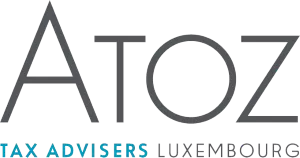On 9 June 2023, the Luxembourg tax authorities ("LTA") released a circular (the "Circular") on the reverse hybrid rule, as introduced as from tax year 2022 by Article 168quater of the Luxembourg Income Tax Law ("LITL"), as well as an FAQ on the related tax return (Form 205) to be filed by Luxembourg reverse hybrid entities.
A Luxembourg reverse hybrid is an entity that is treated as tax transparent under the laws of Luxembourg but as a separate entity (i.e. opaque) under the laws of the jurisdiction(s) of the investor(s). As a result of the implementation of ATAD2 in Luxembourg, a Luxembourg reverse hybrid may become a "taxpayer within the meaning of article 168quater of the LITL".
We will provide an overview of the clarifications provided by the LTA in the Circular, which deal with the tax status of the reverse hybrid entity and the determination of its taxable basis, as well as the computation of the Luxembourg tax due. While these clarifications are welcome given that the law did not address these practical issues, more guidelines will be needed to address all issues related to the reverse hybrid rule.
Circular on reverse hybrid entities
Based on the reverse hybrid rule of Article 168quater of the LITL (in force since tax year 2022), Luxembourg tax transparent entities within the meaning of Article 175 of the LITL (partnerships, ...) may be subject to corporate income tax ("CIT") on the portion of their net income that is not otherwise taxed under the LITL or the laws of any other jurisdiction (hereafter the "taxpayer within the meaning of Article 168quater of the LITL" or the "reverse hybrid entity").
However, the reverse hybrid mismatch rule only applies if the related party test as defined in Article 168quater (1) of the LITL is satisfied. This is the case when the entity is owned by one or more non-resident associated enterprises within the meaning of Article 168ter (1) No. 18 of the LITL (individuals or entities) that are resident in a jurisdiction (or jurisdictions) that regard the Luxembourg entity as opaque and hold directly or indirectly a participation of at least 50% in terms of voting rights or capital ownership (or are entitled to receive at least 50% of the entity's profit).
Thus, only those investors that are resident in jurisdictions that view the Luxembourg entity as opaque are to be considered when determining whether the 50% threshold is met. Furthermore, the 2023 amendment of Article 168quater (1) of the LITL1 clarifies that the reverse hybrid mismatch rule would only apply if the non-taxation of the income realised by the associated enterprises through the Luxembourg entity is due to the difference in the qualification (i.e. transparent vs. opaque) of the Luxembourg entity.
Consequently, if and to the extent the income of the reverse hybrid entity would not be taxed in any case due to the tax (exempt) status of the investor under the laws of the investor jurisdiction(s), such investors should be excluded from the related party test. This should be the case if the recipient benefits from a subjective tax exemption (for example, pension funds that benefit from a special tax regime), the investor jurisdiction does not levy corporate income tax or the investor jurisdiction adopted a territorial system where the payment would be treated as non-taxable foreign source income.
Which LITL provisions apply to taxpayers within the meaning of article 168quater of the LITL?
The Circular deals with the determination of the taxable income of reverse hybrid entities as well as the computation of the Luxembourg CIT due. For that purpose, the Circular clarifies the tax status of Luxembourg reverse hybrid entities. In this respect, it clarifies that they are not tax resident within the meaning of Article 159 of the LITL so that only a few articles of Title II of the LITL (section of the LITL dealing with CIT) apply to them.
According to the Circular, only the following CIT provisions of the LITL apply to taxpayers within the meaning of Article 168quater of the LITL:
- Articles 158 and 163 (1) of the LITL: Taxation on an
annual basis based on the calendar year
Based on Article 158 of the LITL, the tax is assessed on an annual basis and the tax year corresponds to the calendar year. According to Article 163 (1) of the LITL, the CIT is assessed on the income realised by the taxpayer during the calendar year. Thus, even if the reverse hybrid has an accounting year which differs from the calendar year, for Luxembourg CIT purposes, income and expenses will have to be taken into account for the calendar year during which they are generated. - Article 162 (1) of the LITL: Application of the LITL
provisions dealing with personal income tax
According to Article 162 (1) of the LITL, the provisions of Title I of the LITL (section of the LITL dealing with personal income tax) apply to taxpayers within the meaning of Article 168quater of the LITL. However, given the categories of net income likely to be taxed in the hands of a taxpayer within the meaning of article 168quater of the LITL and taking into account its special tax status and the fact that it is not a natural person, many of the provisions of Title I will never be applicable, except the ones dealing with categories of income a reverse hybrid entity may realise and the determination of the related net income.
Regarding the provisions of Title I of the LITL which are relevant for reverse hybrid entities, the Circular makes it clear that Article 115-15a of the LITL applies. Hence, taxpayers within the meaning of Article 168quater of the LITL may, under certain conditions, benefit from a 50% exemption on qualifying dividends.
In addition, regarding tax credits, the Circular indicates that if the reverse hybrid entity receives Luxembourg sourced income which was subject to Luxembourg dividend withholding tax ("WHT"), the Luxembourg tax withheld will be creditable in proportion to the part of the income subject to Luxembourg CIT at the level of the reverse hybrid entity. In the same way, foreign withholding tax credits (based on Articles 13, 134bis and 134ter of the LITL) will apply prorata to the income subject to CIT at the level of the reverse hybrid entity. - Article 168 (1) n°2 & 4: Non-deductibility of
certain categories of expenses
According to Article 168 (2) of the LITL, CIT, net wealth tax and municipal business tax expenses are not deductible for CIT purposes. In addition, according to Article 168 (4) of the LITL, expenses incurred for religious, charitable or general interest purposes (except certain donations within the meaning of Article 109 (1) n° 3 of the LITL) are not tax deductible.
These are the limitations included in the CIT section of the LITL, which will apply to Luxembourg reverse hybrid entities. However, Luxembourg reverse hybrid entities may obviously also be subject to further limitations to the deduction of their expenses, based on the provisions included in Title I of the LITL (e.g. based on Article 105 of the LITL). - Articles 173 and 174 (1): Tax rate and determination of
the amount of tax payable
According to Article 173 of the LITL, the fraction of taxable income below 50 euros should be disregarded.
Article 174 of the LITL deals with the CIT rate applicable. Accordingly, a reverse hybrid entity will be subject to CIT on the portion of its net income that is not otherwise taxed under the LITL or the laws of any other jurisdiction as follows:
- At a rate of 15% if the taxable income does not exceed EUR 175,000;
- At an intermediary rate varying between 15% and 17% if the taxable income is above EUR 175,000 but does not exceed EUR 200,000; and
- At a rate of 17% if the taxable income exceeds EUR 200,000.
However, the Circular does not only specify the CIT provisions of the LITL applicable to taxpayers within the meaning of Article 168quater of the LITL. Instead, the Circular also clarifies some CIT provisions of the LITL, which do not apply to these taxpayers:
- Article 164ter of the LITL: Controlled foreign companies ("CFC") rules;
- Article 166 of the LITL: Participation exemption regime;
- Article 168bis of the LITL: Interest deduction limitation rules; and
- Article 168ter of the LITL: Hybrid mismatch rules.
The non-application of Articles 164ter, 168bis and 168ter of the LITL, which are additional anti-abuse rules introduced by ATAD, is not surprising since a reverse hybrid entity is not a tax resident within the meaning of Article 159 of the LITL and the purpose of the reverse hybrid rule is only to make sure that the portion of income which would otherwise not be taxed anywhere due to the reverse hybrid situation is taxed at the level of the reverse hybrid entity.
As far as the non-application of the participation exemption regime is concerned, while the non-application is understandable as the regime does not apply to partnerships, the fact that the reverse hybrid entity will not be able to benefit from an exemption of dividends or capital gains based on Article 166 of the LITL means that it might be subject to a tax treatment which is less favorable than the one which would have applied, under certain conditions, to a fully taxable Luxembourg company.
Nevertheless, reverse hybrid entities may still benefit from a 50% dividend exemption available under certain conditions based on Article 115-15a of the LITL.
How is the taxable income of reverse hybrid entity calculated?
While the reverse hybrid entity will be subject to Luxembourg CIT, it does not mean that all its income subject to Luxembourg CIT will qualify as commercial income. Instead, the determination of the taxable income will depend on the specific income category. This is clarified in the Circular. For taxpayers within the meaning of Article 168quater of the LITL, income which may be subject to CIT will fall under the last three categories of income referred to in Article 10 of the LITL, i.e.:
- net income from movable capital within the meaning of Article 97 of the LITL;
- net income from rental property within the meaning Article 98 of the LITL; or
- net miscellaneous income, including income from casual services that do not fall under any other income category, as specified in Article 99 of the LITL.
Based on Article 103 of the LITL, the net income subject to CIT is thus obtained by deducting expenses within the meaning of Article 105 of the LITL borne to directly acquire, secure and retain the revenues from revenues within the meaning of Article 104 of the LITL - defined as all goods and benefits, both in cash and in kind, made available to the taxpayer. Accordingly, income and expenses will be considered as realised or incurred and will have to be included in the taxable basis of the reverse hybrid entity when it is effectively received or paid by the reverse hybrid entity (and not when it is accrued). Moreover, the total net income to be taken into consideration is the total net income earned during the calendar year, irrespective of the taxpayer's accounting year.
The Circular further clarifies that when revenues and/or expenses are denominated in a foreign currency, the conversion of foreign currency amounts into euros is to be made, in principle at the exchange rate applicable on the day the income is received or the expense is incurred. However, as a simplification measure, the Circular allows the conversion of these amounts uniformly either at the year-end exchange rate or at the average exchange rate for the year. In this respect, it is not specified whether the taxpayer can choose a different conversion method every year or if, once chosen, the same method must be applied consistently, years after years.
Finally, the Circular reiterates that only the net income that is not otherwise taxed under the LITL or the laws of any other jurisdiction may be taxed at the level of the reverse hybrid entity.
Are distributions made by reverse hybrid entities subject to Luxembourg withholding tax?
Here, the Circular confirms that no WHT applies on distributions made by the reverse hybrid entity.
Income distributions to the investors in a reverse hybrid entity are not subject to withholding tax because such income does not qualify as income from movable capital within the meaning of Article 97 of the LITL.
What are the tax compliance obligations of a taxpayer under 168quater of the LITL?
Finally, the Circular mentions the new Form 205 which will have to be used and filed by taxpayers within the meaning of Article 168quater of the LITL. An FAQ released on the same day as the Circular provides some useful information in respect of this new form and details the information to be included in it.
In this respect, the FAQ clarifies who has to file Form 205, Form 200 and Form 300, mentioning that Form 205 and Form 200 are mutually exclusive as well as Form 205 and Form 300. In principle, entities should submit the Form mentioned in the letter sent by the LTA to taxpayers requesting them to submit their tax returns even if, in the opinion of the person or service provider who helped draw up the tax return, no net income has been realised or no net income is subject to CIT. In addition, Form 205 must also be filed by all entities that have not been invited to do so when the criteria for submission to CIT are met.
Form 205 is to be filed from the 2022 tax year onwards by tax transparent entities within the meaning of Article 168 quarter of the LITL - and in particular limited partnerships ("SCS") or special limited partnerships ("SCSp") - which have been incorporated or established in the Grand Duchy of Luxembourg and generate net income from movable capital (Article 97 of the LITL) or miscellaneous net income (article 99 of the LITL). Furthermore, the FAQ provides some guidance on how to file the different sections of Form 205: the first part of Form 205 refers to net income subject to income tax in Luxembourg, whether earned by resident taxpayers or non-resident taxpayers and the second part of Form 205 is dedicated to the reporting formalities relating to reverse hybrid entities and mainly restates what has been explained in the Circular.
The FAQ also clarifies that Form 200 is to be filed by tax transparent entities which realise business profits within the meaning of Article 14 of the LITL, which are not subject to municipal business tax, agricultural or forestry profits or profits from the exercise of a liberal profession.
Form 200 must also be filed when the entity realises net rental income on movable or immovable assets (Article 98 of the LITL), net miscellaneous income which relates to real estate (article 99, 1 and 2 of the LITL), or, when realised on an ancillary basis, net income from movable capital (article 97 of the LITL) or net miscellaneous income relating to property other than real estate (article 99, numbers 1 and 2 of the LITL). When these two last categories of income are not realised on an ancillary basis (but mainly), a Form 205 must be filed.
Tax transparent entities that realise business profits in accordance with article 14 of the LITL subject to municipal business tax must finally file a Form 300. In this case, all co-investors – whether resident or non-resident – realise commercial income that is taxable in Luxembourg.
Implications
The clarifications provided by the LTA in the Circular and the FAQ on the tax status of reverse hybrid entities, the determination of their taxable basis, the computation of the Luxembourg CIT due and the tax compliance obligations of a taxpayer under 168quater of the LITL are welcome and will be useful for reverse hybrid entities which only have six months left to file their first tax return in Luxembourg. Nonetheless, a few practical aspects of Form 205 remain unclear and additional guidance in this respect would still be needed to provide more legal certainty to taxpayers within the meaning of Article 168quater of the LITL.
In addition, the Circular only deals with the CIT consequences for an entity which falls within the scope of Article 168quater of the LITL but does not address the scope of the reverse hybrid mismatch rule which has been further limited through a clarification in the 2023 Tax Bill.
Ultimately, Luxembourg entities within the meaning of Article 175 of the LITL (partnerships, ...) that are owned by foreign investors should first and foremost focus on the analysis as to whether or not the reverse hybrid mismatch rule applies as the related party test sets a very high threshold for the application of this anti-abuse measure.
The content of this article is intended to provide a general guide to the subject matter. Specialist advice should be sought about your specific circumstances.


